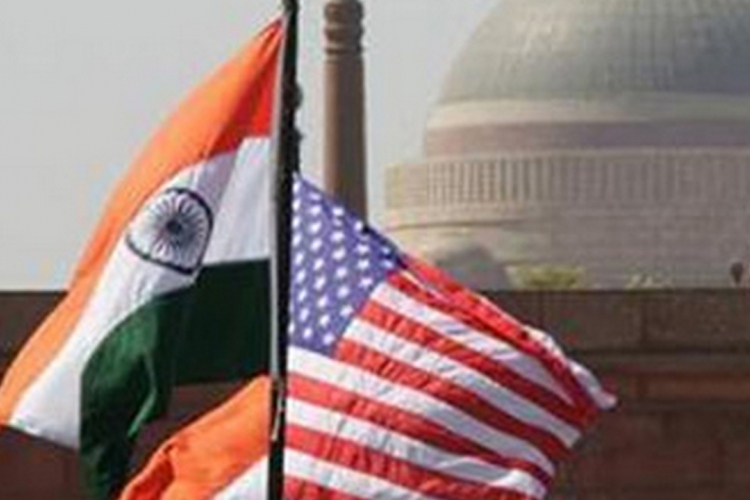India's Trade dispute with US : WTO panel
India Trade dispute with US : WTO panel
A World Trade Organization (WTO) panel on Thursday ruled against at least five of India’s export promotion schemes, saying it was granting prohibited subsidies in a victory for the US, which had approached the multilateral body.
The government has been given 90-180 days to withdraw the concessions under the schemes, which include the Merchandise Exports from India scheme (MEIS), Special Economic Zones scheme, Export Oriented Units, Electronics Hardware Technology Park and Bio-Technology Park (EOU/EHTP/BTP) schemes, Export Promotion Capital Goods (EPCG) and the Duty-Free Imports for Exporters scheme (DFIS).
Merchandise Exports from India scheme
MEIS was launched under Foreign Trade Policy of India (FTP) 2015-20. It is one of the two schemes introduced in FP 2015-20, as part of Exports from India Scheme. The other scheme is Service Exports from India Scheme (SEIS). Objective of MEIS is to offset infrastructural inefficiencies and associated costs involved in export of goods and products, which are produced and manufactured in India. It also seeks to enhance India’s export competitiveness of these goods and products having high export intensity, employment potential. Under this scheme, Ministry of Commerce gives duty benefits to several products. It provides duty benefits at 2%, 3% and 5% depending upon the product and country.
Special Economic Zones scheme
Special economic zone (SEZ) is an area in which the business and trade laws are different from the rest of the country. SEZs are located within a country's national borders, and their aims include increased trade balance, employment, increased investment, job creation and effective administration. To encourage businesses to set up in the zone, financial policies are introduced. These policies typically encompass investing, taxation, trading, quotas, customs and labour regulations. Additionally, companies may be offered tax holidays, where upon establishing themselves in a zone, they are granted a period of lower taxation. This policy intended to make SEZs an engine for economic growth supported by quality infrastructure complemented by an attractive fiscal package, both at the Center and the State level, with the minimum possible regulations
SEZ are set up under Special Economic Zones Act, 2005 as duty free enclaves to be treated as foreign territory for the purpose of trade operations and duties and tariffs. SEZ are allowed for manufacturing, trading and service activities. A single window SEZ approval mechanism by Board of Approval Application recommended by states/UTs are approved by BOA
Export Promotion Capital Goods (EPCG)
India had two variants of EPCG Scheme viz. Zero Duty EPCG for few sectors and 3% Duty EPCG for all sectors. On 5th June, 2012, a new Post Export EPCG Scheme was also announced which was notified on 18 February, 2013 by the CBEC. From April 2013, the government has merged Zero Duty EPCG and 3% EPCG Scheme into one scheme which is now known as Zero Duty EPCG Scheme covering all sectors. EPCG is a zero duty scheme which allows the import of capital goods such as machinery for preproduction, production and post production of export items. But it is not a free lunch. The duty free import by an exporter has to be paid back in the form of an export obligation equivalent to 6 times of duty saved on capital goods imported under EPCG scheme, to be fulfilled in 6 years reckoned from Authorization issue-date. This means that if an exporter imports a tool making machine and saves an import duty of Rs. 100, he will have make the tools and export tools worth minimum Rs. 600 within 6 years.
The panel found that India was granting prohibited export subsidies in the form of exemptions from customs duties and the national Integrated Goods and Services Tax, deductions from taxable income, and the issuance of notes (or “scrips”) that firms can use to pay off certain debts to the government. US claims regarding a subset of exemptions from customs duties and an exemption from excise duties were rejected by the panel. While the Indian authorities did not comment, in a statement, the US Trade Representative said the WTO panel had agreed that India provides prohibited subsidies to Indian exporters worth more than $7 billion annually. The agency said that India offered prohibited subsidies to producers of steel products, pharmaceuticals, chemicals, information technology products, textiles, and apparel, to the detriment of American workers and manufacturers.
While the government has already announced a replacement for MEIS, it has the option to appeal against the panel’s ruling. The US had dragged India to the WTO in March 2018, questioning its export promotion schemes as the trade battle between the two countries intensified. During the hearing, the panel first rejected India’s claim that it was exempted from the prohibition on export subsidies under the special and differential treatment provisions of the WTO’s Agreement on Subsidies and Countervailing Measures. The panel determined that India had “graduated” from the exemption it was originally entitled to and was not eligible for any further transition period.


 IAS -2025 Prelims Combined Mains Batch - III Starts - 14-04-2024
IAS -2025 Prelims Combined Mains Batch - III Starts - 14-04-2024